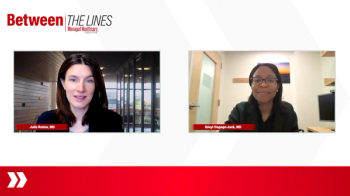
Special Population Considerations for Patients With Vitiligo
Renata Block, PA-C, and Gary M. Owens, M.D., explore the access considerations for patients with vitiligo in special populations and review resources that clinicians and payers can share with patients with vitiligo.
Episodes in this series

Dr. Heather Woolery-Lloyd: Renata, when you think about access and considerations in your practice, how do you address access for your pediatric patients to this new medication for vitiligo?
Renata Block: As far as treating pediatric patients, ruxolitinib is approved for those 12 years of age and older. We definitely have that door open (with regard) to treating those patients, especially the teenagers, because we know we spoke about it throughout this whole segment about how the quality of life and the perception of having this disease in front of their peers can be very stressful and lead to...depression. Allowing that patient to start at 12 years of age is, I think, very exciting in the dermatology clinic and as a provider.
Dr. Heather Woolery-Lloyd: Yes, I agree. Those teenage years are challenging and even more challenging if you have a visible skin disease. It is exciting that ruxolitinib is approved for patients 12 years of age and older. Now, there’s another patient population that we have challenges with when it comes to coverage, and those are our Medicare patients. (Dr. Owens), can you tell us what options are available when we have new pharmacologic therapeutic medications that unfortunately co-pay programs are not available to?
What can we do for those Medicare patients?
Dr. Gary M. Owens: Yeah, you raise a good point. The reason that co-pay cards are not available to Medicare or for that matter for any government program is because it’s against federal law to have those type of assistance programs in place. Basically, it’s considered an inducement and therefore not allowable. On the other hand, there are 501(c)(3) foundations out there. They are funded by grants. Many of those grants are from pharmaceutical companies, but there are grants from other foundations to those. And those 501(c)(3) foundations can grant co-payment assistance. Typically, it’s a needs-based co-payment assistance based off of (patients’) income level as compared (with) the FPL, the federal poverty level. The grants have to be unrestricted, which means they can’t be targeted towards any specific therapy but have to be available to help with payment for any therapy that’s used to treat a disease. The other issue with those 501(c)(3) foundations is they have limited resources. When their grants are expired, they no longer are able to grant any additional co-payment assistance. And most of those co-payment assistance programs have a cap on the annual amount a patient can tap into. But they are very helpful, and they do allow many patients to get the therapies they need because they do provide that co-payment assistance within the parameters of the law.
Dr. Heather Woolery-Lloyd: That is something I think that we should talk a lot about, because I think that sometimes those patient assistance programs are underutilized, and they’re there. Now, you did say, (Dr. Owens), there are limitations, that there’s only a certain amount of funds. But we should, I feel like as clinicians, make sure that we access those patient assistance programs for the appropriate patients because they’re there, and I think sometimes they’re underutilized. We might just say, “Oh, it’s not covered” or “You have a plan that is not covered,” but I try to emphasize (to) go the next step and utilize those programs because they’re there for a reason. I’m glad that you brought that up so that we have some options for our Medicare patients who do not have access to co-pay cards legally.
Dr. Gary M. Owens: Right. Even some specialty pharmacies have financial counseling programs that can help members access foundation assistance. There are numerous ones of these foundations. They all have different programs; not every foundation has a co-payment assistance for every disease state. It does require a little bit of work to research them sometimes.
Transcript edited for clarity.
Newsletter
Get the latest industry news, event updates, and more from Managed healthcare Executive.


















































